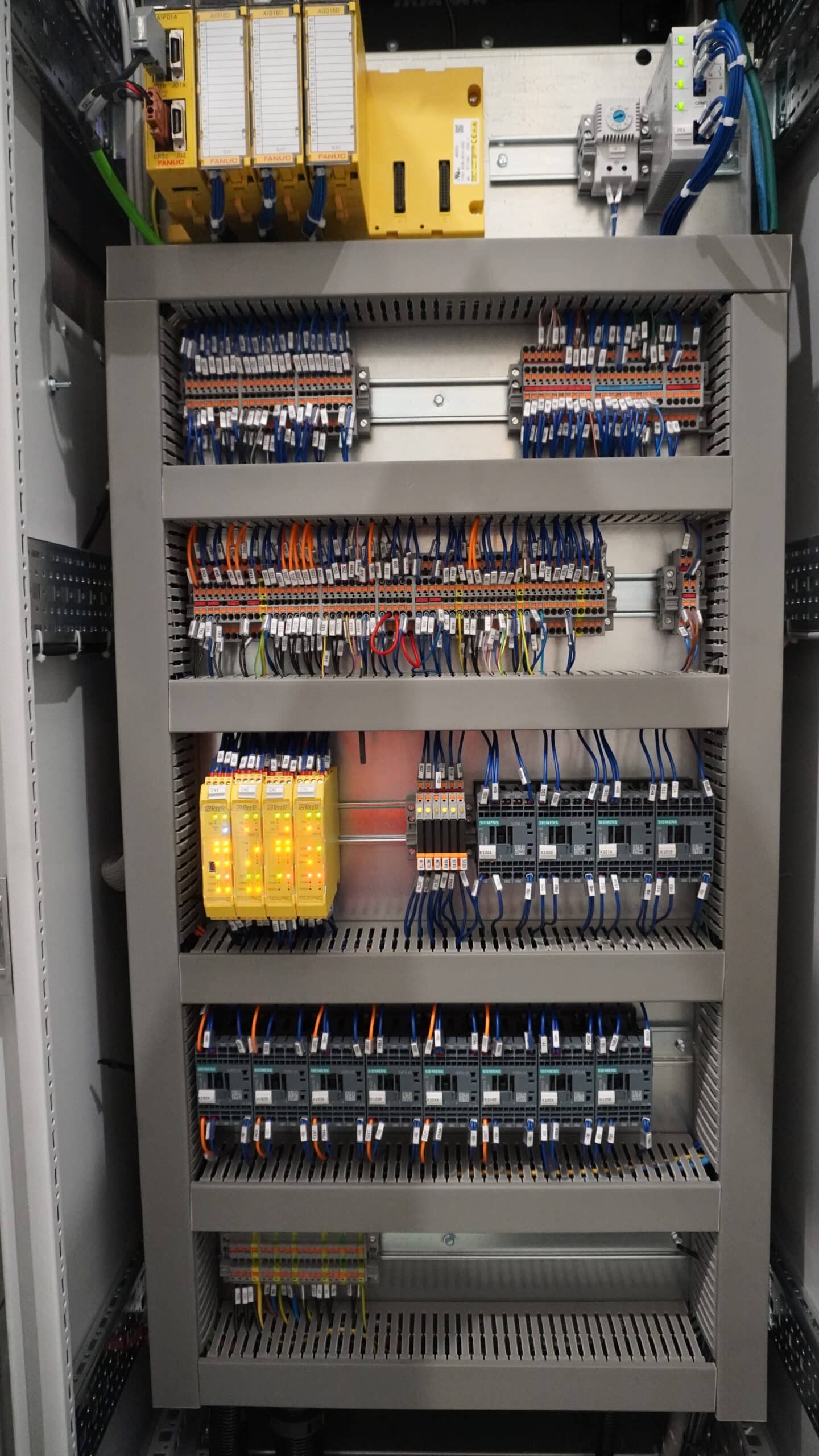Ultima modifica: 06/05/2025
IL DUBBIO: per marcare CE il mio Quadro di Automazione, o il mio Quadro di Controllo, devo fare dei test EMC?
CONSIDERAZIONE 1:

Durante lo sviluppo dell’edizione 2016 della norma IEC 60204-1, i membri del team (IEC/TC44 MT 60204-1) hanno concordato di adottare il cosiddetto “approccio modulare”, introdotto negli anni ’90 nella norma IEC 60439-1 e poi ripreso nella serie IEC 61439.
Di seguito il testo della norma IEC 60204-1: edizione 2016:
[IEC 60204-1: 2016] 4.4.2 Electromagnetic compatibility (EMC)
The electrical equipment shall not generate electromagnetic disturbances above levels that are appropriate for its intended operating environment. In addition, the electrical equipment shall have a sufficient level of immunity to electromagnetic disturbances so that it can function in its intended environment. Immunity and/or emission tests are required on the electrical equipment unless the following conditions are fulfilled:
- the incorporated devices and components comply with the EMC requirements for the intended EMC environment specified in the relevant product standard (or generic standard where no product standard exists), and;
- the electrical installation and wiring are consistent with the instructions provided by the supplier of the devices and components with regard to mutual influences, (cabling, screening, earthing etc.) or with informative Annex H if such instructions are not available from the supplier.
NOTE The generic EMC standards IEC 61000-6-1 or IEC 61000-6-2 and IEC 61000-6-3 or IEC 61000-6-4 give general EMC emission and immunity limits.
In sostanza, secondo l’edizione 2016 della IEC 60204-1, per i quadri elettrici, non è richiesto alcun test se tutti i componenti sono marcati CE, conformi alla direttiva EMC e installati secondo le istruzioni del produttore. Questo approccio, denominato “approccio modulare”, è presente anche nell’edizione 2020 della norma IEC 61439-1. Verrà leggermente modificato per la versione 2025 delle norme EN IEC 61439-1 e -2.
CONSIDERAZIONE 2:
Questo approccio, sebbene condiviso dalla maggior parte dei membri del gruppo di lavoro che scrive la IEC 60204-1, non è stato accettato quando la norma ha dovuto superare il processo di armonizzazione europea. In altri termini siamo stati obbligati a rimuovere quella dicitura, altrimenti la IEC 60204-1 sarebbe stata armonizzata solo con la direttiva Bassa Tensione!
Questo è il motivo per cui lo stesso paragrafo è ora così modificato (e la norma è EN e non EN IEC):
[EN 60204-1: 2018] 4.4.2 Electromagnetic compatibility (EMC)
The electrical equipment shall not generate electromagnetic disturbances above levels that are appropriate for its intended operating environment. In addition, the electrical equipment shall have a sufficient level of immunity to electromagnetic disturbances so that it can function in its intended environment. Immunity and/or emission tests are required on the electrical equipment unless the following conditions are fulfilled:
NOTE 1 The generic EMC standards IEC 61000-6-1 or IEC 61000-6-2 and IEC 61000-6-3 or IEC 61000-6-4 give general EMC emission and immunity limits.
NOTE 2: Annex H provides examples of measures to reduce the effects of electromagnetic influences
CONSIDERAZIONE 3:
Il nuovo Regolamento Macchine non modifica la situazione. Di seguito, i RESS sono quelli previsti dall’attuale Direttiva Macchine e, subito dopo, dal REGOLAMENTO (UE) 2023/1230.
[2006/42 EC] 1.5.11 External radiation. Machinery must be designed and constructed in such a way that external radiation does not interfere with its operation.
[(EU) 2023/1230] 1.5.11. External radiation. Machinery or related products shall be designed and constructed in such a way that external radiation does not interfere with its operation.
CONCLUSIONI: Dal momento dell’armonizzazione della norma EN 60204-1:2018, il produttore di macchinari ha l’obbligo, prima di immettere la macchina sul mercato europeo, di eseguire prove di compatibilità elettromagnetica (EMC). Il problema è che, per la maggior parte dei macchinari, non esistono norme specifiche sulla compatibilità elettromagnetica. La norma EN 55011 è presa come riferimento per tutti i tipi di macchinari, ma è valida solo per le macchine utensili.
Inoltre, l’approccio dettagliato nella norma EN 55011 non è riconosciuto dai consulenti HAS della Commissione Europea. Di seguito la dichiarazione rilasciata da uno di loro nell’ottobre 2023:
EN 55011:2016 “causes inadequate level of protection to radio services and electromagnetic environment by not keeping up the requirements of generic standards (EN IEC 61000-6-3:2021 and EN IEC 61000-6-4:2019), which should be guidelines for product standard committees. Thus, the lack of defined requirements above 1GHz for equipment covered by the document cannot be accepted. In other words, limiting the requirements to only 1 GHz is not justified in the modern harmonized standard.”
La norma EN 55011 è in fase di revisione.